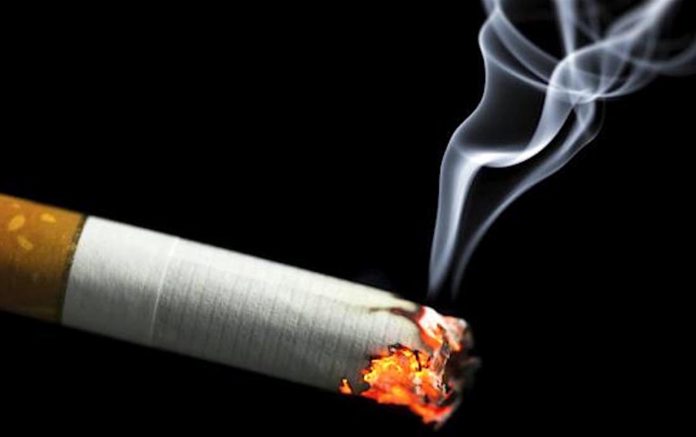Editor’s Note: IASLC Lung Cancer News is pleased to publish this article as part of its continuing focus on the expansion of “combustible tobacco” (cigarettes) to include non-combustible products and related issues.*
Philip Morris International (PMI), one of the leading international tobacco companies, recently pledged on its website to build a smoke-free future.1 In its statement, the company said it envisions that new reduced-risk products (e.g., a heatno- burn product that heats tobacco to produce a vapor instead of smoke, and a non-combustible nicotine delivery product that vaporizes a liquid containing nicotine) will one day replace conventional (combustion) cigarettes. PMI is not the only cigarette manufacturer who has hyped its non-combustible alternative nicotine products. Reynolds American (RAI), British American Tobacco (BAT), and Japan Tobacco (JTI) have also indicated that, with the introduction of smoke-free alternative nicotine products, they are interested in transforming their traditional cigarette business. In addition, there are hundreds of many smaller companies that are not involved in manufacturing cigarettes that have invested in the development and marketing of noncombustible nicotine delivery products. IASLC certainly endorses a smoke-free future, but believes that reduced-risk products alone are not the solution to decreasing tobacco use and its associated morbidity and mortality.
Philip Morris defines reduced-risk products as products that “present, are likely to present, or have the potential to present less risk of harm to smokers who switch to these products versus continued smoking.”1 The company claims that its reduced-risk products generate “far lower quantities of harmful and potentially harmful compounds than found in cigarette smoke.” However, independent evidence is needed to verify such reduced health risk claims being made by cigarette manufacturers, whose history of lying to the public about the health risks of cigarettes is well established. Moreover, there is a need to consider adverse consequences of marketing lower risk products. For example, concerns have been raised that the marketing of heat-no-burn devices and e-cigarettes may encourage nonsmokers, especially teenagers, to try them and possibly serve as a gateway for smoking combustible cigarettes.2-4 In its 2015 Statement on Tobacco Control and Smoking Cessation, IASLC encouraged members and others around the world to support programs to prevent smoking initiation habits in children and youth and to recognize that any attempts to induce nicotine consumption in this population should be avoided.5 Additionally, there may not be any health benefits gained by smokers who do not switch completely to the lower risk tobacco products and continue to smoke traditional cigarettes.
Where the Philip Morris pledge falls short is in the lack of a concrete commitment to strategies that have been demonstrated to reduce combustible cigarette use among all populations. These strategies include higher taxes on tobacco products; comprehensive cigarette advertising and bans on promotion of all tobacco products; product regulation, including cigarette pack warnings; appropriate consumer information; mass media campaigns; smoke-free policies; and help in smoking cessation.
In a press release in response to the Philip Morris pledge, IASLC recommended that the tobacco company and its affiliates support the following:6
• Government proposals such as differential taxes on cigarettes and other harmful combustible tobacco products
• Differential government regulations such as plain packaging and graphic health warnings on cigarettes and other harmful combustible tobacco products
• Efforts to ensure that consumers are properly informed about relative risks of different tobacco products
• Establishment of effective comprehensive regulatory oversight of its products worldwide
• Smoking-cessation programs worldwide
In addition, IASLC recommends that Philip Morris immediately cease litigation opposing government regulations and proposals worldwide, and openly share product-related information on all products with public health scientists so that the potential benefits and harms associated with old and new products can be independently assessed.
The recently reported World Trade Organization (WTO) decision to uphold Australia’s plain packaging laws highlights the contradictory strategies of the tobacco industry as a whole.7 On the one hand, Philip Morris (and other companies) claim an interest in harm reduction via new products; on the other hand, tobacco companies continue to block tobacco control with tactics such as the prolonged and vigorous litigation efforts against the introduction of plain packaging in Australia and elsewhere. Until the tobacco industry resolves such contradictions, the tobacco control community will find it difficult to believe that cigarette companies such as PMI, RAI, BAT, and JTI are truly committed to a reduction in global cigarette consumption.
IASLC is eager to see
measures implemented
that drive a large-scale
exodus from cigarettes
as quickly as possible.
IASLC is eager to see measures implemented that drive a large-scale exodus from cigarettes as quickly as possible. Only with such significant and visible actions can any serious consideration be given to statements about building a smoke-free future.✦
References
1. Philip Morris International. Our manifest to designing a smoke-free future. Available at https:// www.pmi.com/who-we-are/designing-a-smokefree- future. Accessed May 3, 2017. 2. MacLaren EJ. Teenage smoking: an interview with Michael Kulik, MS. IASLC Lung Cancer News. 2016;1:14.
3. O’Leary R, Borland R, Stockwell T, MacDonald M. Claims in vapour device (e-cigarette) regulation: A Narrative Policy Framework analysis. Int J Drug Policy. 2017;44:31-40.
4. US Department of Health and Human Services. E-Cigarette Use Among Youth and Young Adults: A Report of the Surgeon General—Executive Summary. Atlanta, GA: US Department of Health and Human Services, Centers for Disease Control and Prevention, National Center for Chronic Disease Prevention and Health Promotion, Office on Smoking and Health, 2016.
5. International Association for the Study of Lung Cancer. IASLC 2015 statement on tobacco control and smoking cessation. Available at https:// www.iaslc.org/news/iaslc-issues-new-statementtobacco- control-and-smoking-cessation. Accessed May 3, 2017.
6. International Association for the Study of Lung Cancer. IASLC statement regarding Philip Morris’ smoke-free future. Available at https://www.iaslc. org/news/iaslc-statement-regarding-philip-morris’- smoke-free-future-leading-global-lung-cancer. Accessed May 3, 2017.
7. http://www.smh.com.au/world/australia-winslandmark- tobacco-wto-packaging-case-reports- 20170504-gvyx7i.html *IASLC Lung Cancer News thanks Lori Alexander, MTPW, ELS, MWC, and the IASLC Tobacco Control and Smoking Cessation Committee for their contributions to this article











